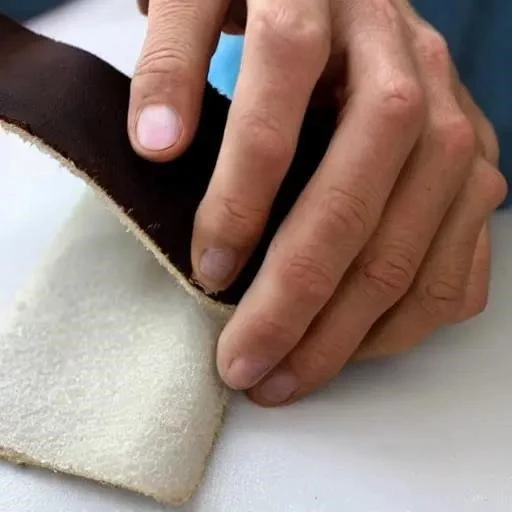There’s a sinking feeling that grips any car owner discovering a fresh tear in their prized leather seats․ That pristine‚ supple surface‚ once a symbol of luxury and comfort‚ now marred by an unsightly gash․ For years‚ such damage often signaled an expensive trip to the upholsterer or‚ worse‚ a disheartening acceptance of imperfection․ However‚ a quiet revolution has been unfolding in the world of automotive care‚ empowering enthusiasts and everyday drivers alike to confront and conquer this common automotive woe․ The notion that a torn leather seat is a permanent blemish is rapidly becoming an outdated myth‚ replaced by a vibrant reality where restoration is not just possible but surprisingly accessible and incredibly rewarding․
Imagine recapturing that factory-fresh feel‚ restoring your vehicle’s interior to its former glory‚ and significantly enhancing its resale value․ This isn’t just about aesthetics; it’s about preserving an investment‚ fostering pride in ownership‚ and embracing a sustainable approach to vehicle maintenance․ From minor scuffs to more substantial rips‚ the landscape of leather repair has evolved dramatically‚ offering a spectrum of solutions that promise durability and a near-invisible finish․ By integrating insights from advanced material science and leveraging surprisingly effective DIY techniques‚ car owners are now equipped to tackle what once seemed like insurmountable damage‚ transforming despair into delight with every successful restoration․
Choosing Your Path: DIY vs․ Professional Leather Repair
Deciding how to address a tear in your car’s leather seats often boils down to a fundamental choice: tackling the project yourself or entrusting it to a seasoned professional․ Both avenues offer distinct advantages and considerations‚ shaped by the severity of the damage‚ your budget‚ and your comfort level with hands-on restoration․ The table below provides a comprehensive comparison to guide your decision-making process‚ ensuring you select the most appropriate and effective solution for your specific situation․
| Aspect | DIY Leather Seat Repair | Professional Leather Seat Repair |
|---|---|---|
| Cost Implications | Significantly lower‚ primarily covering the cost of a repair kit (typically $30-$100)․ | Higher‚ ranging from $150-$500+ depending on damage severity and vehicle type․ |
| Required Skill Level | Moderate for small tears; requires patience‚ attention to detail‚ and a steady hand․ | Expertise from specialized training‚ experience with various leather types and repair techniques․ |
| Tools & Materials | Repair kits include leather filler‚ sub-patch material‚ dyes‚ applicators‚ cleaners‚ and sometimes texture paper․ | Industrial-grade fillers‚ specialized adhesives‚ heat guns‚ airbrushes for precise color matching‚ texture pads‚ professional-grade dyes․ |
| Expected Repair Quality | Good to very good for minor damage if instructions are followed meticulously; results can vary based on user skill․ | Typically superior‚ often achieving near-invisible repairs‚ especially for larger or more complex damage․ |
| Time Commitment | Can be several hours spread over a day or two‚ accounting for multiple application layers and drying times․ | Usually completed within a few hours to a full day‚ depending on the extent of the repair needed․ |
| Best Suited For | Small scuffs‚ minor punctures‚ tears up to a few inches‚ budget-conscious individuals willing to learn․ | Large rips‚ structural damage‚ areas involving airbags‚ complex patterns‚ luxury vehicles‚ or those desiring a factory-finish․ |
For further reference and to explore professional-grade leather care products and repair solutions‚ consider visiting industry leaders such as Leather World Technologies or Leatherique․ These resources offer valuable insights and products for both DIY enthusiasts and professional restorers․
The Art of DIY: Mending Your Masterpiece
For those embracing the DIY spirit‚ the journey of repairing a car’s leather seat tear is akin to a skilled artist restoring a cherished masterpiece․ It begins with meticulous preparation‚ a crucial step often underestimated․ First‚ thoroughly clean the damaged area using a dedicated leather cleaner‚ removing all dirt‚ oils‚ and contaminants․ This ensures optimal adhesion of subsequent repair materials․ Having diligently prepped the surface‚ a sub-patch‚ typically a strong‚ flexible fabric‚ is carefully inserted beneath the tear‚ acting as a foundation․ This unseen structural support is vital‚ preventing the tear from reopening and providing a stable base for the filler․
Next comes the application of a specialized leather filler‚ a remarkable compound designed to mimic the flexibility and texture of genuine leather․ Applied in thin‚ even layers‚ each allowed to dry completely‚ this filler gradually builds up the damaged area‚ smoothing out imperfections and bridging the gap․ Patience here is not just a virtue; it’s a necessity‚ ensuring a durable and seamless repair․ Once the filler has cured‚ the magic of color matching begins․ Modern repair kits often include a range of dyes‚ allowing you to custom-blend a shade that perfectly integrates with your existing leather․ Applied with a sponge or brush‚ often in several light coats‚ this step truly revitalizes the seat‚ making the repair virtually undetectable․ Finally‚ a protective top coat seals the repair‚ offering enhanced durability and a consistent finish․
Expert Insights: Elevating Your Repair Game
Industry experts consistently emphasize that the secret to a lasting repair lies in understanding the material itself․ “Leather isn’t just a surface; it’s a dynamic material requiring specific care‚” explains a seasoned automotive restorer‚ highlighting the importance of using products specifically formulated for leather․ The evolution of repair technologies has introduced incredibly effective water-based dyes that penetrate the leather’s pores rather than simply sitting on the surface‚ resulting in a far more natural feel and appearance․ Moreover‚ innovations in texture pads‚ which can replicate the original grain of the leather‚ are allowing DIYers to achieve results previously reserved for professionals․ By meticulously working with the leather’s inherent properties‚ a repair can not only hide the damage but also extend the life of the seat‚ defying the initial perception of irreparable harm․
While DIY solutions are remarkably effective for many common tears‚ there are instances where professional intervention becomes invaluable․ Extensive damage‚ tears in areas critical to safety (like those near airbags)‚ or intricate patterns might necessitate the specialized tools and deep expertise of a professional upholsterer․ These artisans possess industrial-grade equipment‚ including sophisticated color-matching systems and heat-activated fillers‚ allowing them to perform structural repairs and achieve factory-level finishes that are challenging to replicate at home․ Recognizing these boundaries is a mark of smart car ownership‚ ensuring that even the most daunting damage can be addressed with confidence and precision‚ maintaining the integrity and value of your vehicle․
Beyond the Fix: Sustaining Your Leather’s Luster
A successful repair is merely the beginning of a renewed relationship with your car’s interior․ Proactive maintenance is paramount in preventing future leather seat tears and ensuring the longevity of your restoration efforts․ Regular cleaning with gentle leather cleaners‚ followed by conditioning treatments‚ will keep the leather supple and resistant to cracking and drying – common precursors to tears․ Conditioning deeply nourishes the material‚ much like moisturizing skin‚ preventing brittleness and maintaining its natural resilience․ By adopting a routine of care‚ you’re not just preserving the aesthetic appeal; you’re investing in the structural integrity of your seats‚ extending their lifespan and safeguarding your vehicle’s interior for years to come․
The narrative around damaged leather seats has undeniably shifted․ No longer are rips and tears viewed as catastrophic‚ unavoidable flaws․ Instead‚ they represent an opportunity for restoration‚ an engaging project for the DIY enthusiast‚ and a testament to the remarkable advancements in automotive care․ Whether you choose to meticulously mend it yourself‚ driven by a desire for perfection‚ or entrust it to the skilled hands of a professional‚ the future of your car’s interior is bright․ Embrace the possibility of renewal‚ and drive forward with confidence‚ knowing that your beautifully restored leather seats are a testament to modern ingenuity and a commitment to enduring quality․ The road ahead is smooth‚ and your seats‚ once torn‚ are now ready for countless more journeys‚ looking as splendid as ever․

